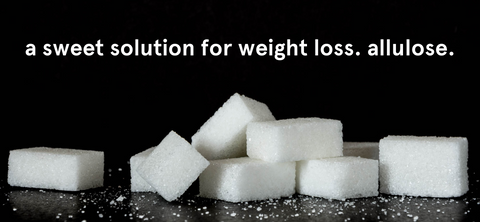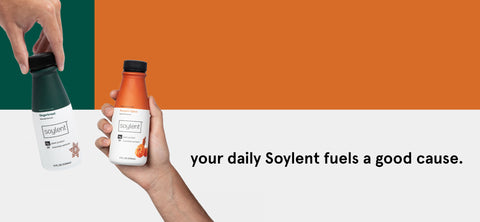
Schlepping clunky gear miles across uneven terrain will make you think twice about what goes into your pack. Every ounce matters.
Backpackers, hikers, and climbers know this all too well. Water pumps, iodine tablets, and filtration systems take up enough room as is. Then, you have to consider the food that’s going to fuel you for every hour of your adventure. There is a lot of data out there about what types of food will fuel your hikes most efficiently and healthily as possible, but we have compiled a few Soylent based tricks for you.
Space-saving food tips and tricks
Like everything else you bring, food must be as compact and lightweight as possible. Here are the smartest options to assure you’re eating nutritiously (and even deliciously) without tacking on extra pounds to your poor shoulders.
Breakfast + coffee in one bottle

You can bring liquids on your outdoor excursion, but make sure the liquids serve a real purpose. If you want to kill two birds with one stone (not literally, respect the birds people!), toss a few bottles of our Soylent Cafe Mocha into your pack. With 400 calories, 20 grams of plant-based protein, and 150mg of caffeine and L-theanine, you’ll be able to cross breakfast and morning coffee off your list in one fell swoop. Even a made for hiking coffee pot takes up much needed space.
If you aren’t a coffee drinker, we’ve still got you covered. Our Soylent Complete Energy Chocolate comes with all the same nutrients, none of the coffee flavor, 100mg of caffeine, and a blend of 5 brain-boosting nootropics. This is as close to a superpower in a bottle as you’ll find—camping or not and at only 11oz it is enough to pop into a side pocket or fanny pack.
Vacuum-sealed dried food and additions

Some of the best meals you’ll eat outdoors are vacuum-sealed dried meals. Chicken and noodles, zesty beans and rice, and oatmeal with berries are all options that only require some water to liven them up. Simply wait for the water to steep, stir, and you’re ready to eat. These can be found at your local outdoor goods store.
To get more calories and flavor out of a dried oats blend, try adding a few spoonfuls of Soylent Original Powder along with water. Not only will Soylent mimic the creaminess of milk when mixed with water, but it will also add calories, protein, and vitamins to your breakfast. Plus, this is a powder and can be stored in any ziplock for your convenience.
As a bonus, you can add Soylent Powder to your morning coffee as a powdered, lightweight coffee creamer.
The backbone of backpacking: power bars

Power bars might be as important to your outdoor adventure as the very boots on your feet. Okay fine, not THAT important—but they certainly are nifty to have on hand.
Sometimes you don’t have the time to stop, unpack all your gear, wait for the water to boil, and prepare a full meal. It’s crucial to have small, nutrient-dense snacks easily accessible to stave off hunger as you keep moving along.
Unfortunately, the snack market is full of sugary, junk food that will give a bit of energy, then drop you into a surefire sugar crash. That’s not fun even when you’re just sitting on the couch, but if you’re on the trail, it’s a total nightmare.
We engineered a line of gluten-free nutrition bars called Soylent Squared with 6 grams of protein, 39 essential nutrients, and only 1 gram of sugar. Try stuffing a few squares of Peanut Butter Chocolate Chip into your pack before you head off for a quick snack with long-burning energy that won’t be a melted mess when you need a pick-me-up.
Ration accordingly

Bringing too much food isn’t the end of the world, but it does add some extra pounds to you pack. However, being the friend with extra food on the trip isn’t a bad role to play, either. But bringing too little food is a reason for alarm. The last thing you want is to get light headed or have to mooch off someone else’s limited food supply because you ran out early.
Before you embark on your trip, sit down and map out how many meals you will need to cover your entire trip from leaving your car in the parking lot to starting it back up and heading home.
From here, you can calculate roughly how many calories you might want per meal and then fill in the gaps with snacks. According to outsideonline, and depending on pack size and speed, you can burn up to 1000 calories per hour while you are on the trail, so nutrient rich, caloric dense foods are critical. You can use this calculator to estimate what you should bring with you.
Even still, play it safe and bring a little more food than you think you will need. And a bag of marshmallows doesn’t count.







